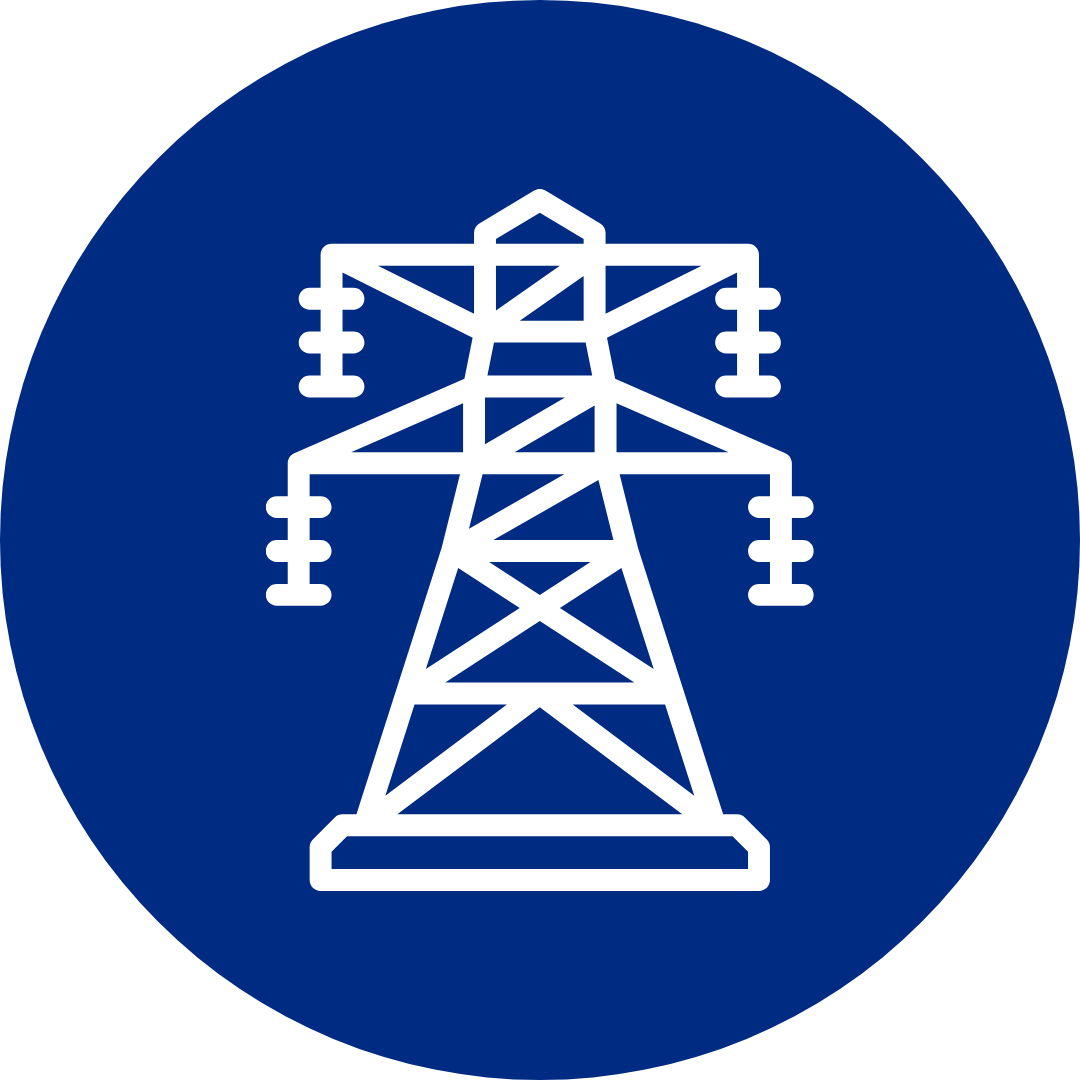Choosing between overhead and underground cables often comes down to cost, reliability, and surroundings. Overhead lines stretch across the landscape on poles or towers, while underground cables stay hidden beneath the surface. Overhead lines are usually cheaper and easier to install, but underground cables offer better protection from weather and blend into the environment.
Each option brings clear trade-offs. Overhead systems can be repaired faster after damage, yet they are more exposed to storms and falling trees. Underground systems avoid these risks, but they are harder and more expensive to fix when faults occur. The decision depends on whether long-term durability, appearance, or budget takes priority.
By looking at both systems side by side, it becomes easier to see which fits best for homes, businesses, or large-scale networks. This comparison highlights the strengths and limits of each, showing where one is more practical than the other.
Key Takeaways
Overhead cables cost less but face more weather risks
Underground cables look better and avoid storm damage
The best choice depends on cost, safety, and location
Overhead Cable Benefits
Overhead lines remain a common choice for power transmission because they are cost-effective and straightforward to install. Steel poles, crossarms, and guy wires provide stable support, allowing the cables to span long distances with fewer materials compared to underground systems.
A key advantage is lower installation cost. Since overhead transmission does not require trenching or heavy insulation, utilities can expand networks quickly and with less expense. This makes them practical for rural and wide-area connections.
Maintenance and repair are also simpler. Faults can often be spotted visually, and crews can access the lines without digging. This reduces downtime and makes restoration faster after storms or equipment failures.
The design of overhead cables also allows for flexibility in upgrades. Extensions or replacements can be added with minimal disruption. Crossarms and guy wires can be adjusted or replaced without major reconstruction.
Feature | Benefit |
Installation | Lower cost, faster setup |
Maintenance | Easy fault detection and repair |
Reliability | Quick restoration after damage |
Expansion | Simple to extend or upgrade |
Overhead transmission supports high-voltage transfer over long distances. The open-air environment helps dissipate heat, which reduces the risk of cables overheating. This makes the system suitable for carrying large amounts of electricity efficiently.
In addition, the clear visibility of overhead lines helps with safety monitoring. Utilities can inspect poles, crossarms, and conductors regularly, ensuring that the system remains functional and secure.
Underground Cable Benefits
Underground cables provide a clear advantage in areas where visual impact matters. Because they are buried, they remove the need for poles and overhead wires, improving the appearance of streets, parks, and city centres. This makes them especially suitable for urban and residential environments.
They also offer greater protection from weather. Unlike overhead lines, underground transmission is not exposed to wind, storms, or ice. This reduces the chance of power cuts caused by falling trees or extreme weather events.
Safety is another notable benefit. With cables located below ground, the risk of accidental contact is far lower. This can be important in densely populated areas or near schools and public spaces.
Key benefits can be summarised as:
Improved reliability in harsh weather
Lower safety risks for the public
Minimal visual impact on landscapes
Reduced maintenance from external damage
Although more expensive to install, underground systems often require less repair over time. They are shielded from corrosion, vandalism, and many environmental hazards that affect overhead lines.
In certain regions, the long-term stability of underground transmission can outweigh the higher initial investment. This is particularly true where reliability and aesthetics are valued more than cost savings.
Overhead vs Underground Cables: Which Is Better for My Home or Business
Choosing between overhead and underground cables depends on cost, appearance, safety, and reliability. Each option has benefits and trade-offs that affect both homes and businesses.
Overhead cables are cheaper to install and easier to repair. Faults are usually found quickly, and crews can restore power faster. However, they are more exposed to weather, trees, and accidents, which means more frequent outages.
Underground cables cost more to install because of excavation and specialised equipment. Yet, they are protected from storms, have lower maintenance needs, and reduce visual clutter. They also pose fewer safety risks since wires are not exposed.
For residential areas, underground cabling is often chosen for its clean look and reduced risk of power cuts. In rural areas, overhead lines remain common because they cover long distances at a lower cost.
Businesses may weigh reliability against expense. For critical facilities, such as hospitals or data centres, underground systems can provide fewer interruptions, though repairs take longer if a fault occurs.
Feature | Overhead Cables | Underground Cables |
Cost | Lower installation cost | Higher installation cost |
Reliability | Faster repair, more outages | Fewer outages, slower repair |
Maintenance | Regular tree trimming needed | Minimal maintenance |
Safety | Higher public contact risk | Lower public contact risk |
Appearance | Visible poles and wires | Hidden, no visual clutter |
The decision often comes down to budget, local conditions, and how much value is placed on aesthetics, safety, and long-term reliability.
UK Weather Test: Overhead vs Underground Cables in Wind, Rain and Storms
The UK climate brings frequent rain, strong winds, and occasional storms. These conditions affect overhead and underground cables in different ways.
Overhead lines face direct exposure. High winds can sway conductors, ice can add weight, and falling trees often cause faults. Lightning strikes are another risk, with tall pylons acting as natural targets.
Underground cables avoid most weather-related issues. Rain, wind, and snow have little impact once a cable is buried. However, flooding can damage joints or ducts, and repairs in wet ground can take longer.
A simple comparison shows the contrast:
Weather Factor | Overhead Cables | Underground Cables |
Wind & Storms | Vulnerable to damage from trees, poles, and conductors | Unaffected by wind |
Heavy Rain | Minimal effect, except where poles stand in saturated soil | Risk of water ingress in poorly sealed joints |
Lightning Strikes | Direct risk, requires protection systems | Rare impact, usually shielded by soil |
Snow & Ice | Can build up on lines and cause breakage | No direct effect |
In rural areas, storms often cause outages on overhead lines because of falling branches. In contrast, buried cables continue to operate but are harder to access if damaged.
While overhead systems are easier to repair after a storm, underground systems usually avoid the disruption in the first place. Each has strengths and weaknesses when tested by the UK’s unpredictable weather.
Cost Guide UK: Overhead vs Underground Cables Upfront and Over Time
The cost of installing power lines in the UK differs greatly depending on whether they are overhead or underground. Overhead lines are usually cheaper to build and maintain, while underground cables require more complex engineering and higher upfront spending.
Reports show that underground cables can be 4 to 5 times more expensive than overhead lines. This is due to excavation, insulation, and specialised equipment needed for installation. In contrast, overhead lines use pylons and bare conductors, which are simpler and faster to construct.
Estimated cost per kilometre (UK examples):
Type of Installation | Approximate Cost Range per km |
Overhead line (L7 pylons) | £1.3m – £1.6m |
Underground cable (open-cut trench) | £6.2m – £6.7m |
Underground cable (cable plough) | £7.2m – £7.9m |
Upfront costs are not the only factor. Maintenance and repair also differ. Overhead lines are exposed and more prone to weather damage, but faults are easier and cheaper to fix. Underground cables are less affected by storms, but when faults occur, repairs are slower and more expensive because the cables are buried.
Over time, the higher installation cost of undergrounding is rarely offset by reduced maintenance. For large projects, such as a 96 km route, undergrounding can add hundreds of millions of pounds compared with overhead construction. These costs are ultimately passed on to electricity consumers.
Safety Basics: Overhead vs Underground Cables Around People, Pets and Gardens
Overhead power lines are exposed, which makes them easier to contact by accident. Tall ladders, kites, drones, or even tree branches can touch live wires and create serious risks. Pets and children are also more vulnerable if a line falls during storms or accidents.
Underground cables remove many of these direct contact risks because they are buried. People and animals are less likely to come into contact with them in daily life. However, digging in gardens, installing fences, or planting trees can damage hidden cables and cause injury or service disruption.
Key safety differences:
Aspect | Overhead Cables | Underground Cables |
Public contact | Higher risk from exposed wires | Lower risk unless digging occurs |
Pets and wildlife | Can be harmed by fallen lines | Rarely exposed to cables |
Garden activity | Minimal risk unless poles are nearby | Risk when digging or planting |
Crews face different hazards as well. Working on overhead lines involves height and live wire dangers, while underground repairs require confined space entry and careful excavation.
In residential areas, underground systems often feel safer because they reduce the chance of accidental contact. Still, safe digging practices and cable location checks remain essential to protect both people and pets.
Performance Check: Overhead vs Underground Cables, Losses and Reliability
The overhead transmission system is widely used for long-distance transmission because it allows easier cooling of conductors and simpler fault detection. Losses in overhead lines mainly come from resistance and corona effects, but repairs are usually faster since faults are visible and accessible.
The underground transmission system avoids many weather-related issues such as wind, ice, or falling trees. This improves reliability by reducing the number of interruptions. However, when a fault occurs, locating and repairing it often takes longer due to the buried nature of the cables.
In terms of efficiency, both systems carry current effectively, but underground cables tend to have higher capacitance. This can increase reactive power losses over long distances, making them less suited for very long transmission routes without additional equipment.
A simple comparison highlights the trade-offs:
Feature | Overhead Transmission | Underground Transmission |
Fault Detection | Quick and visible | Hidden, harder to locate |
Repair Time | Shorter | Longer |
Weather Resistance | Exposed to storms, trees, animals | Protected from most surface impacts |
Losses | Lower capacitance losses | Higher capacitance, needs compensation |
Reliability | More outages, faster repair | Fewer outages, slower repair |
Utilities often weigh construction cost, reliability, and long-term performance when deciding between the two systems. Each option has strengths that fit specific conditions, such as urban density, terrain, or distance of transmission.
Planning and Kerb Appeal: How Overhead vs Underground Cables Affect the Look of Your Street
The way cables are placed can change the appearance of a street. Overhead lines are visible on poles, while underground cables remain hidden. This difference can affect how people view the property and the wider neighbourhood.
Overhead cables often stand out against the skyline. They can block views, add visual clutter, and make a street look busier. In older areas, poles may also look out of place compared to modern buildings and landscaping.
Underground cables remove this issue by keeping wires out of sight. Streets look cleaner and less crowded, which can improve kerb appeal. This is one reason many residential developments prefer underground systems, despite higher installation costs.
A simple comparison:
Feature | Overhead Cables | Underground Cables |
Visibility | Highly visible on poles | Hidden from view |
Impact on views | Can block or disrupt scenery | No impact on views |
Street appearance | Adds clutter | Cleaner, more open look |
Property impression | May lower kerb appeal | Often improves kerb appeal |
Local planning rules and budgets often guide the choice. In urban centres, overhead lines are common due to cost. In rural or scenic areas, undergrounding is sometimes chosen to protect views and maintain character.
For homeowners, the difference can be noticeable. A street without poles and wires may feel more attractive, while one with overhead lines may appear less tidy.
Environment and Access: Overhead vs Underground Cables and Future Upgrades
Overhead and underground cables affect the environment in different ways. Overhead lines change the visual landscape and can impact wildlife habitats, while underground cables disturb soil and vegetation during installation. Each option creates trade-offs between visual impact and ground disturbance.
Access for maintenance also differs. Overhead lines are easier to inspect and repair since faults are visible and equipment is accessible. Underground cables require excavation for repairs, which can be time-consuming and costly. This makes fault detection and restoration more challenging.
Environmental considerations extend to construction materials. Underground cables often use more insulation and protective layers, which increases resource use and energy in production. Overhead lines, while less resource-intensive, are more exposed to weather and may need more frequent maintenance.
Future upgrades depend on location and demand. In urban areas, underground systems reduce clutter and safety risks, but upgrading them requires digging through streets. In rural or open areas, overhead lines are simpler to expand or replace.
A quick comparison:
Factor | Overhead Cables | Underground Cables |
Visual impact | High | Low |
Wildlife impact | Possible | Limited |
Repair access | Easy | Difficult |
Upgrade ease | Easier | Harder |
Material demand | Lower | Higher |
Both systems will continue to evolve as networks modernise and demand for reliable, low-impact energy grows.
Frequently Asked Questions
Overhead and underground power cables differ in design, cost, reliability, and environmental impact. Each system has strengths and weaknesses that make it more suitable for certain locations and voltage levels.
What is the difference between underground and overhead cables?
Overhead cables use bare conductors mounted on poles or towers, while underground cables are insulated and buried beneath the surface.
Overhead lines are easier to install and repair but are more exposed to weather. Underground cables are hidden from view and less affected by storms, yet they require complex insulation and higher installation costs.
What are the advantages of using overhead lines over underground cables?
Overhead lines are cheaper to build and extend across long distances.
They are easier to maintain and faults can be located and repaired more quickly. In rural or open areas, overhead lines are the most practical option for high-voltage transmission.
What is more efficient, an underground or overhead system?
Overhead systems generally carry power more efficiently at high voltages because they lose less energy as heat.
Underground cables need thicker insulation, which traps heat and can reduce efficiency. However, at lower voltages and short distances, underground systems can perform well without major losses.
Does the UK have overhead power lines?
Yes, the UK has thousands of kilometres of overhead power lines.
The National Grid uses overhead lines at 275 kV and 400 kV to move electricity across the country. These lines are supported by steel lattice towers, often called pylons.
Are power lines overhead or underground?
Both types are used.
Transmission lines that carry electricity over long distances are usually overhead. Distribution lines in towns and cities are often underground to reduce visual impact and avoid interference with buildings and streets.
Are pylons cheaper than underground cables?
Yes, pylons and overhead lines are far cheaper to install than underground cables.Studies show that underground systems can cost many times more per kilometre, especially at high voltages. The difference in cost comes from excavation, insulation, and the complexity of installation.
What are the disadvantages of underground cables?
Underground cables are expensive to install and difficult to repair if they fail.They require more insulation and generate more heat, which can limit efficiency at high voltages. Faults are harder to locate, and repairs often involve digging up roads or land, which increases time and cost.
Alarm Cable
Arctic Grade Cable
Armoured Cable
Audio & Speaker Cable
Auto Cable
Bare Copper
Belden Equivalent Cable
Co-axial Cable
Data Cable
DC Telecom Cable
Defence Standard Cable
Emergency Lighting & Fire Detection Cable
EV Cable
Festoon
![Loose Tube Fibre Cross Section]()
Fixed Wiring PVC & LSOH Cable
Flatform
Flexible Control Cable
Flexible PVC Cable
Flexible Rubber Cable
General Wiring Cable PVC & LSOH
High Temperature Cable
High Voltage Cable
![5308 p1 t2 cat Cross Section]()
LSOH Flexible Cable
Medium Voltage Cable
NYY & N2XH Cable
Protected Wiring Cable
Silicone Cable
Solar Cable
Split Concentric Cable
Spiral Cable
Temporary Power Cable
Tri-Rated Cable
Welding Cable
Alarm Cable
Arctic Grade Cable
Armoured Cable
Audio & Speaker Cable
Auto Cable
Bare Copper
Belden Equivalent Cable
Co-axial Cable
Data Cable
DC Telecom Cable
Defence Standard Cable
Emergency Lighting & Fire Detection Cable
EV Cable
Festoon
![Loose Tube Fibre Cross Section]()
Fixed Wiring PVC & LSOH Cable
Flatform
Flexible Control Cable
Flexible PVC Cable
Flexible Rubber Cable
General Wiring Cable PVC & LSOH
High Temperature Cable
High Voltage Cable
![5308 p1 t2 cat Cross Section]()
LSOH Flexible Cable
Medium Voltage Cable
NYY & N2XH Cable
PAS - BS5308 Instrumentation Cable
Protected Wiring Cable
RS-232 Cable
RS-485 Cable
Silicone Cable
Solar Cable
Split Concentric Cable
Spiral Cable
Telephone Cable
Traffic Signal Cables
Temporary Power Cable
Tri-Rated Cable
Welding Cable
Airports
Automation & Process Control
![Automotive]()
Building & Construction
Communication & Telecommunication
Data Centres
Defence
![DNO 1]()
E-Mobility
Food & Beverage
Marine & Offshore
Mining, Drilling & Tunnelling
OEMs
Oil, Gas & Petrochemical
Rail & Metro
Renewable Energy
Switchgear
Power
Water Treatment













































